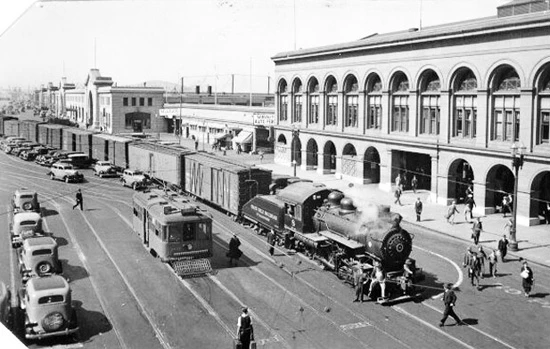
photo courtesy of San Francisco History Center, San Francisco Public Library A Railroad to Improve San Francisco's Port The California Gold Rush of 1849 dramatically transformed San Francisco into a bustling port town, exploding with new people and construction. Due to the lack of any proper city planning, San Francisco's waterfront grew haphazardly into a maze of wharves, piers and warehouses. The state of California established a harbor commission to improve the waterfront's transportation systems. In 1890, the harbor commission built the State Belt Railroad, designed to improve the flow of goods and materials up and down the waterfront by serving the piers and linking them with the outlying commercial warehouses and railroads The original purpose of the State Belt Railroad was to serve the waterfront's commercial shipping activities but as the city's needs changed, so did the length and scope of the railroad. During World War I, in an effort to support the military's shipping needs, a railroad tunnel was constructed to extend the Belt Railroad out to the Fort Mason army post. By 1917, the state extended the railroad out to the Presidio army base. At the height of the State Belt Railroad, 67 miles of track were in service. Overtime, however, the use of the railroad dwindled as Oakland surpassed San Francisco as the major Bay Area shipping port. In 1969, the railroad was renamed the San Francisco Belt Railroad after the state sold the waterfront property rights to the city. By 1993 the railroad company had gone out of business and the much of the tracks abandoned. 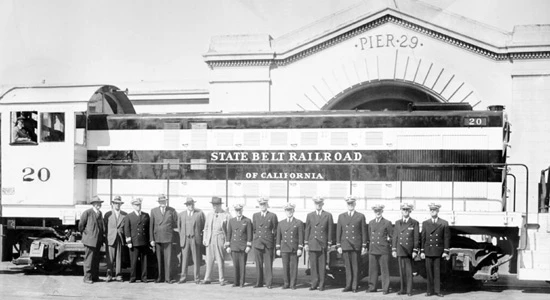
photo courtesy of San Francisco History Center, San Francisco Public Library Some frequently asked questions about the State Belt Railroad:
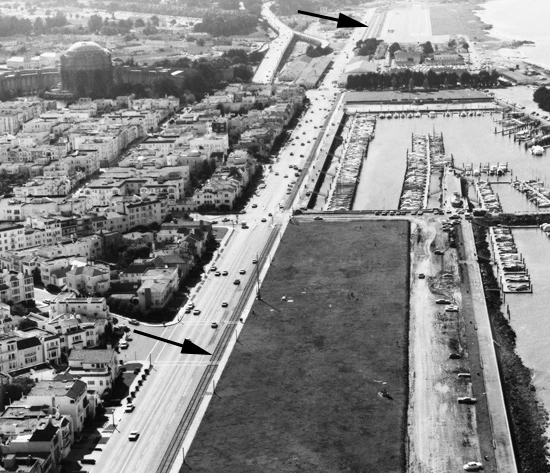
PARC, NPS What roles did the Fort Mason-Presidio Belt Line extension play in supporting the war effort during World War I and World War II? During World Wars I and II, the Fort Mason-Presidio Belt Line extension provided a crucial link between the Presidio and the San Francisco Port of Embarkation at Fort Mason. The army transported troops and supplies from the Presidio along the railroad lines to awaiting transport ships. Army hospital ships, returning from the Pacific with wounded soldiers, also would dock at Fort Mason. Then medics would carefully transport the injured men to army hospital trains that delivered them via the Belt Line to the Presidio's Letterman Army Hospital. After initial treatment at Letterman, many soldiers were then shipped out on hospital trains that carried them to other medical facilities across the country for further treatment. How was the Belt Line related to the new Letterman General Hospital? 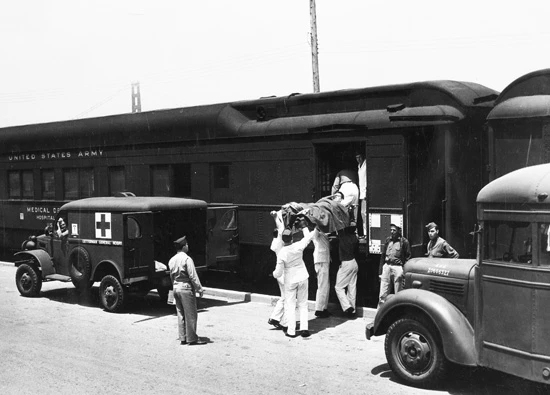
PARC, NPS When did the State of California take the State Belt Railroad out of service and why?
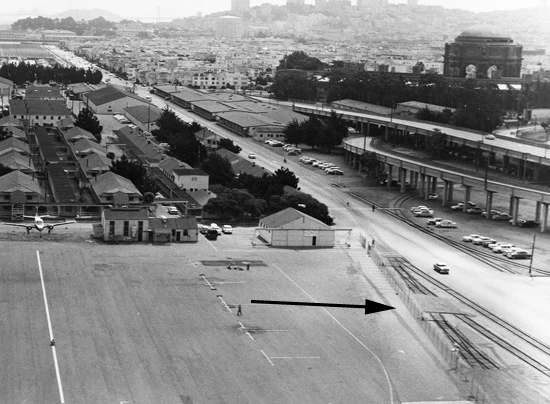
PARC, NPS To learn more about San Francisco railroads, please visit: Golden Gate Railroad Museum |
Last updated: March 19, 2015
